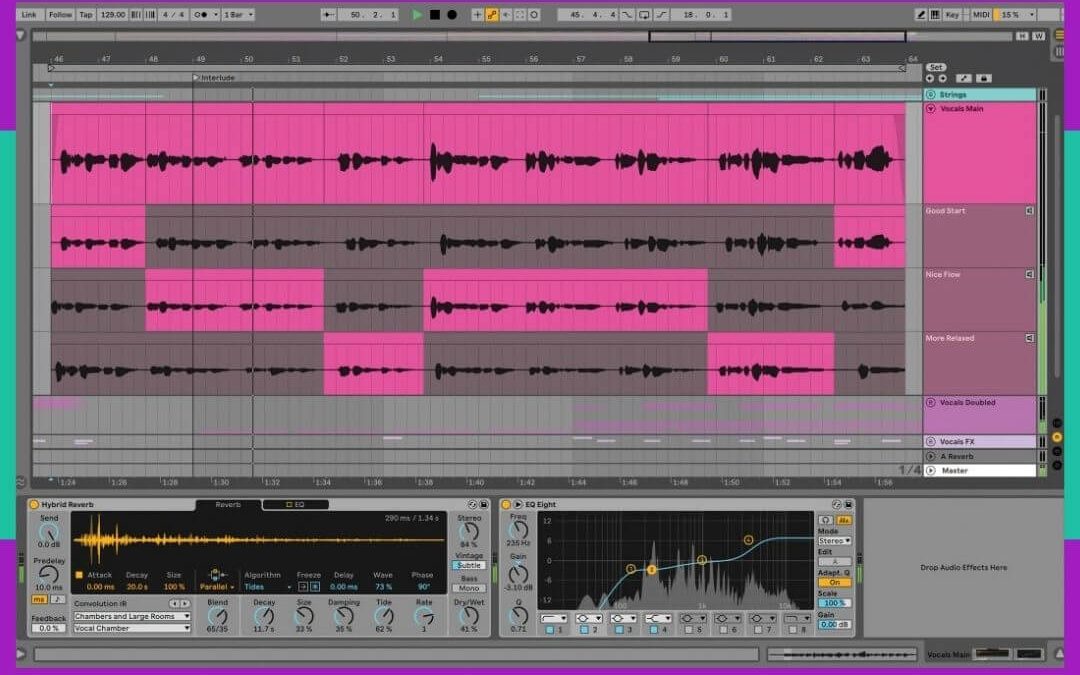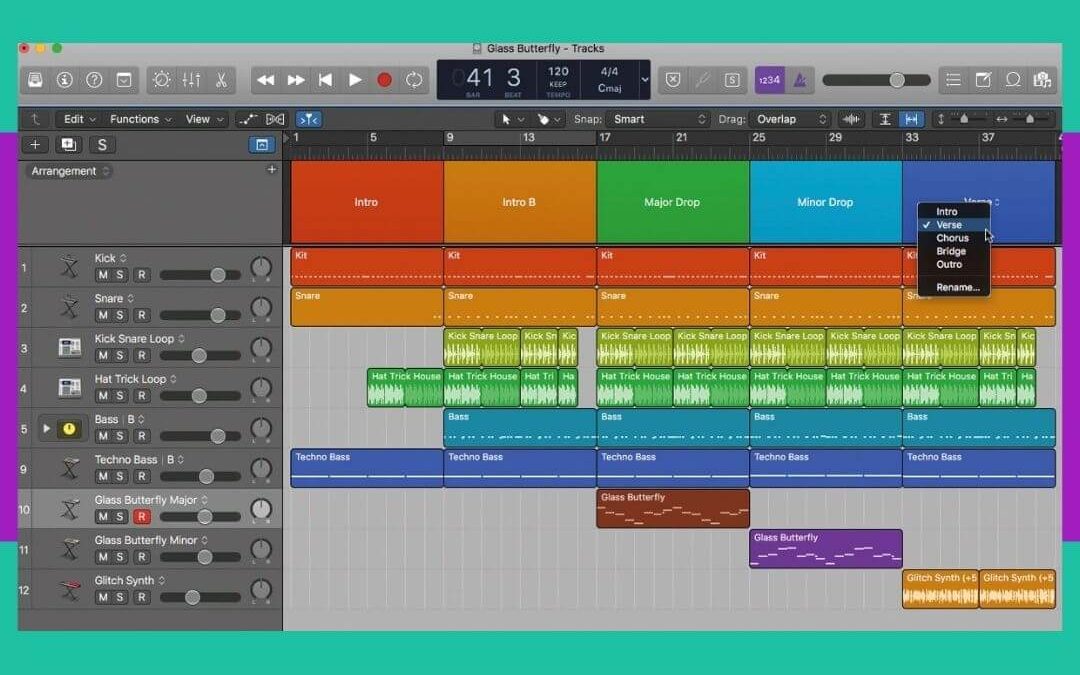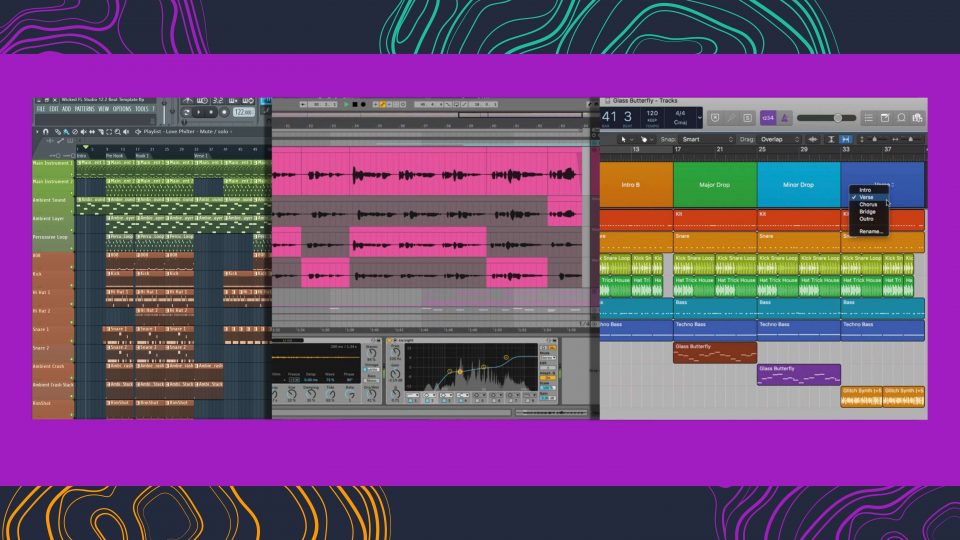What is a DAW? Where Music is Made
A DAW is where all the digital music-making happens.
DAW is short for Digital Audio Workstation. In short, it’s a piece of software where you can record and edit audio, add effects to individual sounds or groups of sounds, and mix different audio channels so they work together in a song.
Developers design DAWs to be compatible with both Windows and Mac systems.
Our Top 5 Free DAWs That Remove Barrier to Entry to Music Creation and Then Some

Record and Edit Audio in Your DAW
In a recording sense, a digital audio workstation converts analog audio that you send to it via a microphone and an audio interface, into a digital sequence that your computer can process. Then this digital audio information appears in front of you visually inside your DAW. It can appear as sonic waveforms (bars representing MIDI commands) or as music notation on a staff in some DAWs.
As we mentioned, a DAW allows you to record and edit audio. This means you can compose music, create musical (or non-musical) loops, mix and master music. More specifically, digital audio workstations’ sole purpose is to process digital music.
A combination of DAW tracks (otherwise known as channels), be it 32, 64, or hundreds, sums up to a final product – usually a song. However, it could also be a podcast or audio-visual content too! A digital audio workstation can process any type of audio — not only music. Some sound designers, ADR engineers, audio editors, and voiceover artists use the same DAW programs used by top music producers.
All of this internal processing can get pretty tedious with your mouse and keyboard. That’s where MIDI controllers come in.
Connect MIDI Controllers
Connecting a MIDI controller to your DAW, which every DAW supports, allows you to play or program notes into your DAW. But what notes are you programming, exactly?
Install Plugins
Third-party manufacturers such as Native Instruments and iZotope create what we call virtual instruments and plugins. But, on this point, a DAW always has its own stock plugins and virtual instruments.
A virtual instrument is a piece of software that emulates the sound of an instrument. As well as emulating acoustic instruments, you can get softsynths like Xfer Serum and create your own sounds! In many cases, one piece of software emulates the sound of many instruments! Native Instruments’ Kontakt player is one such virtual instrument. With the right settings, you can play a key or chord on your MIDI keyboard and you’ll hear that respective key/chord from your virtual instrument.

Plugins, on the other hand, are effects that you can apply to your sounds. A virtual instrument is, technically, a plugin. But for the purposes of this article, we’re referring to them as two different things.
Plugins come in all shapes and sizes. EQs, compressors, distortion units, noise generators, and so much more allow you to apply these effects to your sound and mixes.
Every DAW has its own user interface design and layout, and each has its own unique tools. But all DAWs share many characteristics too!
Fill your DAW and inspire your creativity with any sample you desire.
The sampling revolution has risen in popularity and shaped music since the early 1970s. Sample culture continues to transform how millions of artists and producers do their thing in DAWs.
You too can break conventional norms, challenge the status quo, and open Pandora’s box of sound design.
Mixxed works with a growing number of sample labels and contributors to provide you with an affordable sample subscription service that’s more accessible than any before.
You’ll have access to our growing catalogue of loops, one-shots and sound effects that you can browse, download and keep forever for less than $3 a month.
Sign up today to find your sound!
